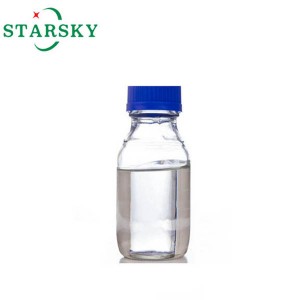2 5-Bis(aminomethyl)furan/CAS 2213-51-6/BAMF
25 kg/drum or 200 kg /drum or based on customer's requirements.
BAMF is a highly functional nitrogen-containing fine chemical produced by reductive amination of HMF in H2 and NH3 atmospheres.
Among various potential biobased diamine monomers, BAMF is one of the most valuable diamines for potential applications. It is also a monomer with a furan ring as the parent nucleus that can be obtained from biomass resources and is considered to play an important role in ensuring the sustainability of the future polymer industry.
* We can offer a range of payment options to our clients.
* When the sum is modest, clients typically pay with PayPal, Western Union, Alibaba, and other similar services.
* When the sum is significant, clients typically pay with T/T, L/C at sight, Alibaba, and so on.
* Furthermore, an increasing number of consumers will use Alipay or WeChat Pay to make payments.


When transporting 2,5-bis(aminomethyl)furan BAMF, it is important to take several precautions to ensure safety and regulatory compliance. Here are some key considerations to take into account:
1. Regulatory Compliance: Ensure compliance with all local, national and international regulations regarding the transport of chemicals. This includes proper classification, labeling and documentation.
2. Packaging: Use appropriate packaging materials that are compatible with 2,5-bis(aminomethyl)furan. Containers should be strong, leakproof, and resistant to chemical degradation. Secondary containment may be required to prevent spillage.
3. Label: Clearly label the packaging with the chemical name, hazard symbol, and any relevant safety information. This includes handling instructions and emergency contact information.
4. Temperature Control: If the compound is temperature sensitive, ensure that the shipping method maintains proper temperature conditions throughout the entire shipping process.
5. Avoid moisture: Since 2,5-bis(aminomethyl)furan is hygroscopic, precautions should be taken to prevent moisture during transportation. Use a desiccant if necessary.
6. Method of Transportation: Choose a method of transportation that minimizes the risk of exposure to extreme conditions. Make sure the shipping company has experience handling hazardous materials.
7. Emergency Procedures: Provides information on emergency procedures in the event of a leak or exposure during transportation. This includes the Material Safety Data Sheet (MSDS) and emergency contact numbers.
8. Training: Ensure that personnel involved in the transport process are trained in handling dangerous goods and understand the specific risks associated with 2,5-Bis(aminomethyl)furan.
To safely store 2,5-bis(aminomethyl)furan, follow these guidelines:
1. Container: Store the compound in a tightly sealed container to prevent moisture absorption and contamination. Use containers made of materials that are compatible with amines.
2. Temperature: Keep the storage area cool and dry. It is best to store it at room temperature, away from direct sunlight and heat sources.
3. Humidity: Keep humidity levels low as amines are hygroscopic and may absorb moisture from the air.
4. Ventilation: Ensure that the storage area is well ventilated to avoid any accumulation of potentially harmful vapors.
5. Separation: Store away from incompatible materials such as strong acids, oxidants and other active chemicals.
6. Label: Clearly label containers with chemical name, concentration, hazard information, and receipt date.
7. Safety Precautions: Follow all relevant safety guidelines and regulations for handling and storing chemicals, including the use of personal protective equipment (PPE) when handling chemical compounds.










